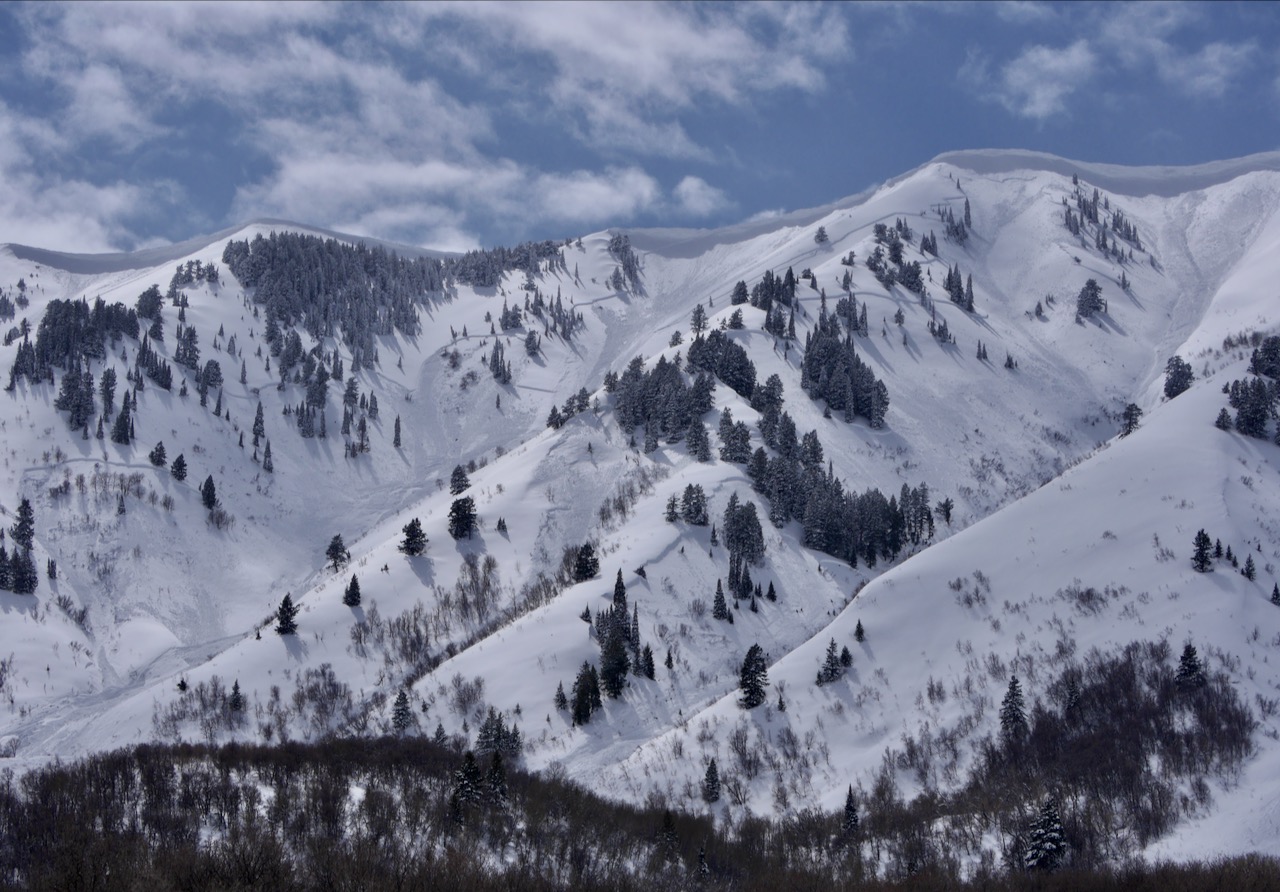Forecast for the Logan Area Mountains

Issued by Toby Weed on
Thursday morning, March 30, 2023
Thursday morning, March 30, 2023
Dangerous avalanche conditions have developed on slopes steeper than 30° at all elevations in the backcountry. Periods of heavy snowfall and drifting by increasing west wind will continue to elevate the danger. There is CONSIDERABLE danger on drifted slopes, especially in northerly facing terrain up high. Large natural cornice falls are possible, and these or people are likely to trigger 1 to 3-foot thick slab avalanches of wind drifted snow. Avalanches of storm snow are possible even in sheltered terrain, and last night's warmth and rain at lower elevations elevated the danger of wet avalanches entraining big piles of moist snow on very steep slopes.
- Make conservative decisions, evaluate snow and terrain carefully.
- Stay well away from and out from under ridge top cornices.
- Avoid being on or below slopes with warmth or rain softened saturated snow.

Low
Moderate
Considerable
High
Extreme
Learn how to read the forecast here






 Very large and long running natural avalanches occurred in the Wellsville Mountain Wilderness with the last storm. (N Hell Canyon, 3-25-23)
Very large and long running natural avalanches occurred in the Wellsville Mountain Wilderness with the last storm. (N Hell Canyon, 3-25-23) Rain on the snow and warm temperatures can cause dangerous wet avalanche conditions to develop at lower elevations, like on the steep slopes above the Logan River in Logan Canyon.
Rain on the snow and warm temperatures can cause dangerous wet avalanche conditions to develop at lower elevations, like on the steep slopes above the Logan River in Logan Canyon.